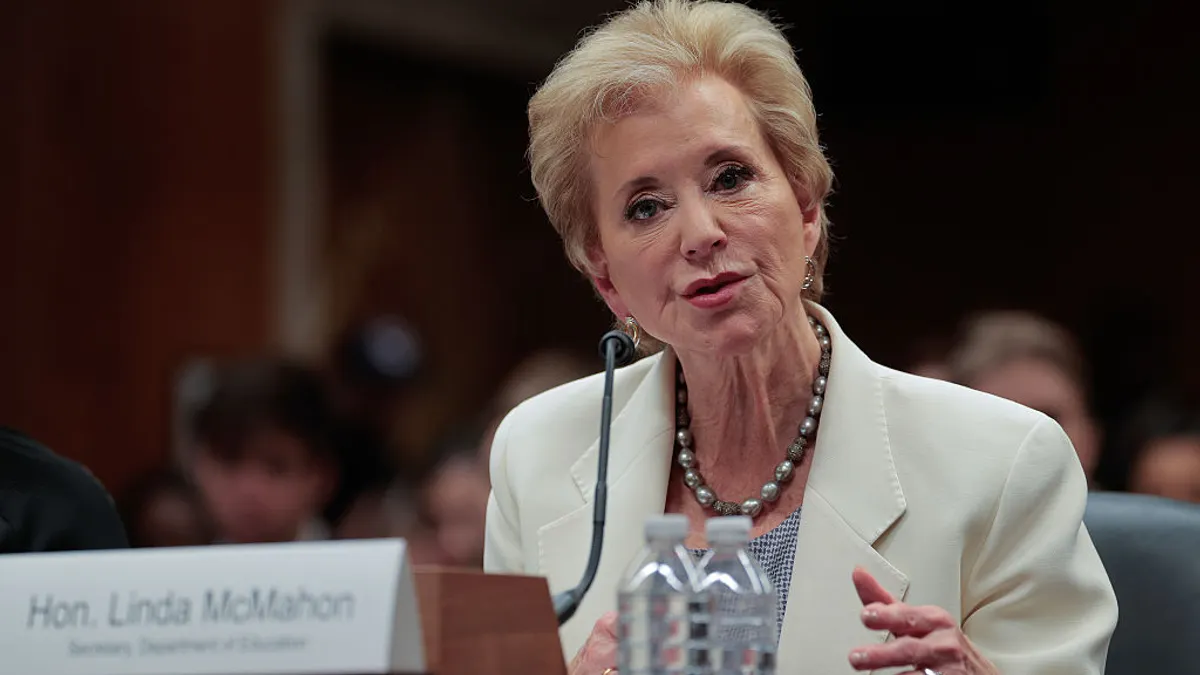Dive Brief:
- Before the coronavirus pandemic forced colleges to conduct most of their classes virtually, six in 10 instructors had taught a distance or hybrid course, according to a small survey from Primary Research Group (PRG) emailed to Education Dive.
- Out of 73 instructors from institutions worldwide, just 22% said their experience so far with online instruction has made them think of it "very or extremely highly" as an educational tool that universities can use after the pandemic subsides. Another 40% view it "not so highly" or "not at all highly."
- While the survey highlights that instructors are struggling with the transition online, colleges may have to continue remote instruction into the fall term.
Dive Insight:
Many college officials are eager to resume in-person instruction. However, more than half of surveyed instructors (55%) said they expect most classes will be entirely virtual during the summer term. Around 14% of instructors anticipate their institutions will experiment with some in-person classes, while 15% expect most classes to be held in-person.
Earlier this week, California State University, which enrolls nearly half a million students across 23 campuses, became the first major university system to commit to mostly virtual instruction in the fall.
Yet many colleges are still pushing to reopen campus, fearing they'll lose students if they have another virtual term.
Dozens of students have sued their colleges for tuition refunds, arguing that the virtual experience isn't worth as much as the on-campus version. And others have indicated in surveys and on social media that they're unimpressed with or struggling to adapt to online instruction.
Few colleges had the necessary digital infrastructure to create well-developed online classes in a matter of weeks, observers note. Instead, many instructors merely recreated their in-person classes through videoconferencing networks.
Nearly half of respondents to PRG's survey said they delivered most of their content in real-time video, while about one-third said they provided students with video links and downloads. Private and high-tuition colleges were more likely to hold classes synchronously, while public and lower-tuition colleges were more likely to use asynchronous content.
However, digital instruction experts note that synchronous instruction could create barriers for students living in another time zone, those with unreliable access to Wi-Fi or who lack a quiet space in their homes to focus on lectures. Colleges will likely need to rely more on asynchronous methods if they continue to teach remotely in the fall.
Surveyed instructors indicated they will need more help with virtual teaching, with just half of the respondents saying they are satisfied with the support they've received from their colleges so far. To maximize the effectiveness of their online courses, respondents said they need more help with exams, technical support and engaging students.
Educational service providers expect the abrupt move online will help grow their businesses.
2U, an online program manager, is launching new offerings to help colleges quickly move some of their programs online. And Strategic Education, the parent company of the for-profit Capella and Strayer universities, plans to help colleges offer their online courses at scale in light of the pandemic.








